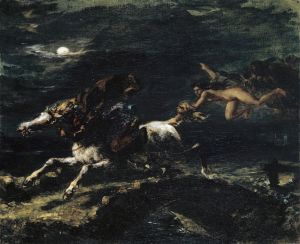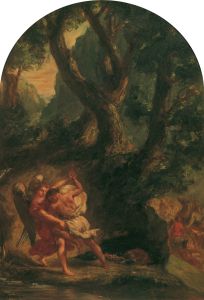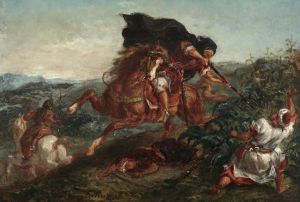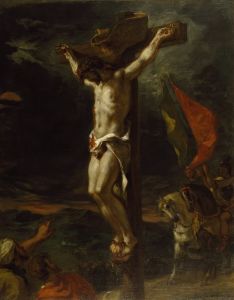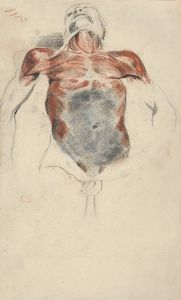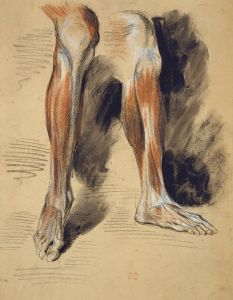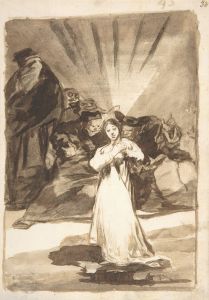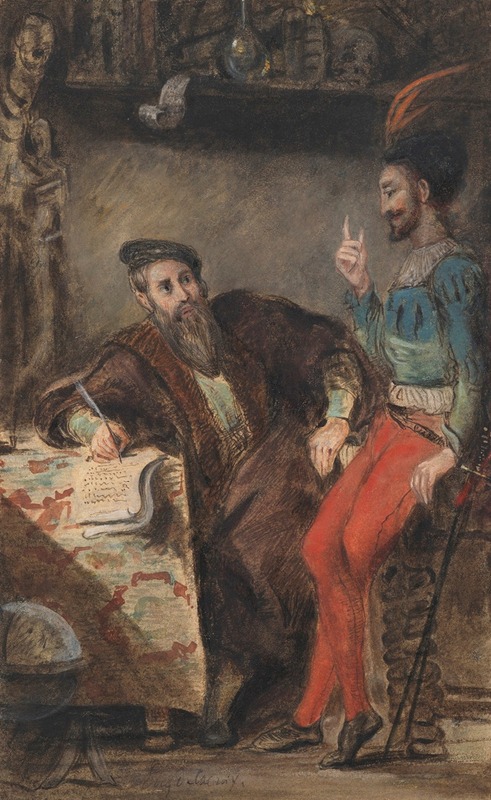
Méphistophélès apparaissant à Faust
A hand-painted replica of Eugène Delacroix’s masterpiece Méphistophélès apparaissant à Faust, meticulously crafted by professional artists to capture the true essence of the original. Each piece is created with museum-quality canvas and rare mineral pigments, carefully painted by experienced artists with delicate brushstrokes and rich, layered colors to perfectly recreate the texture of the original artwork. Unlike machine-printed reproductions, this hand-painted version brings the painting to life, infused with the artist’s emotions and skill in every stroke. Whether for personal collection or home decoration, it instantly elevates the artistic atmosphere of any space.
"Méphistophélès apparaissant à Faust" is a painting by the renowned French Romantic artist Eugène Delacroix. This artwork, created in 1828, is a vivid representation of a scene from Johann Wolfgang von Goethe's famous play "Faust." Delacroix, known for his dynamic compositions and expressive use of color, captures the dramatic moment when Méphistophélès, the demon, appears to Faust.
Eugène Delacroix (1798-1863) was a leading figure in the Romantic movement, which emphasized emotion, individualism, and the sublime. His works often depicted historical events, literary themes, and exotic subjects. Delacroix's fascination with literature is evident in his numerous paintings inspired by works of Shakespeare, Byron, and Goethe.
"Faust" is a tragic play by Goethe, first published in 1808, which tells the story of a scholar named Faust who makes a pact with the devil, Méphistophélès, in exchange for unlimited knowledge and worldly pleasures. The play explores themes of ambition, desire, and the human condition, making it a rich source of inspiration for artists like Delacroix.
In "Méphistophélès apparaissant à Faust," Delacroix masterfully conveys the tension and supernatural elements of the scene. The painting depicts Méphistophélès emerging from the shadows, his presence both menacing and captivating. Faust, the central figure, is shown in a moment of awe and trepidation as he encounters the demon. Delacroix's use of dramatic lighting and bold brushstrokes enhances the sense of otherworldliness and psychological intensity.
The composition of the painting is carefully constructed to draw the viewer's eye towards the interaction between Faust and Méphistophélès. Delacroix employs a rich palette of dark tones and vibrant highlights to create a sense of depth and movement. The contrast between the dark, shadowy background and the illuminated figures adds to the dramatic effect, emphasizing the supernatural nature of Méphistophélès' appearance.
Delacroix's interest in the supernatural and the macabre is evident in this work. His portrayal of Méphistophélès is both sinister and charismatic, capturing the duality of the character as both tempter and tormentor. The painting reflects Delacroix's ability to convey complex emotions and narratives through his art, making it a significant piece in his oeuvre.
"Méphistophélès apparaissant à Faust" is housed in the Louvre Museum in Paris, where it continues to be admired by art enthusiasts and scholars. The painting is a testament to Delacroix's skill as a painter and his deep engagement with literary themes. It also highlights the enduring influence of Goethe's "Faust" on the visual arts.
Delacroix's work on this painting is a prime example of the Romantic era's fascination with the supernatural and the exploration of the human psyche. His ability to bring literary characters to life on canvas has cemented his reputation as one of the most important artists of the 19th century. "Méphistophélès apparaissant à Faust" remains a powerful and evocative representation of the timeless struggle between good and evil, knowledge and temptation.









